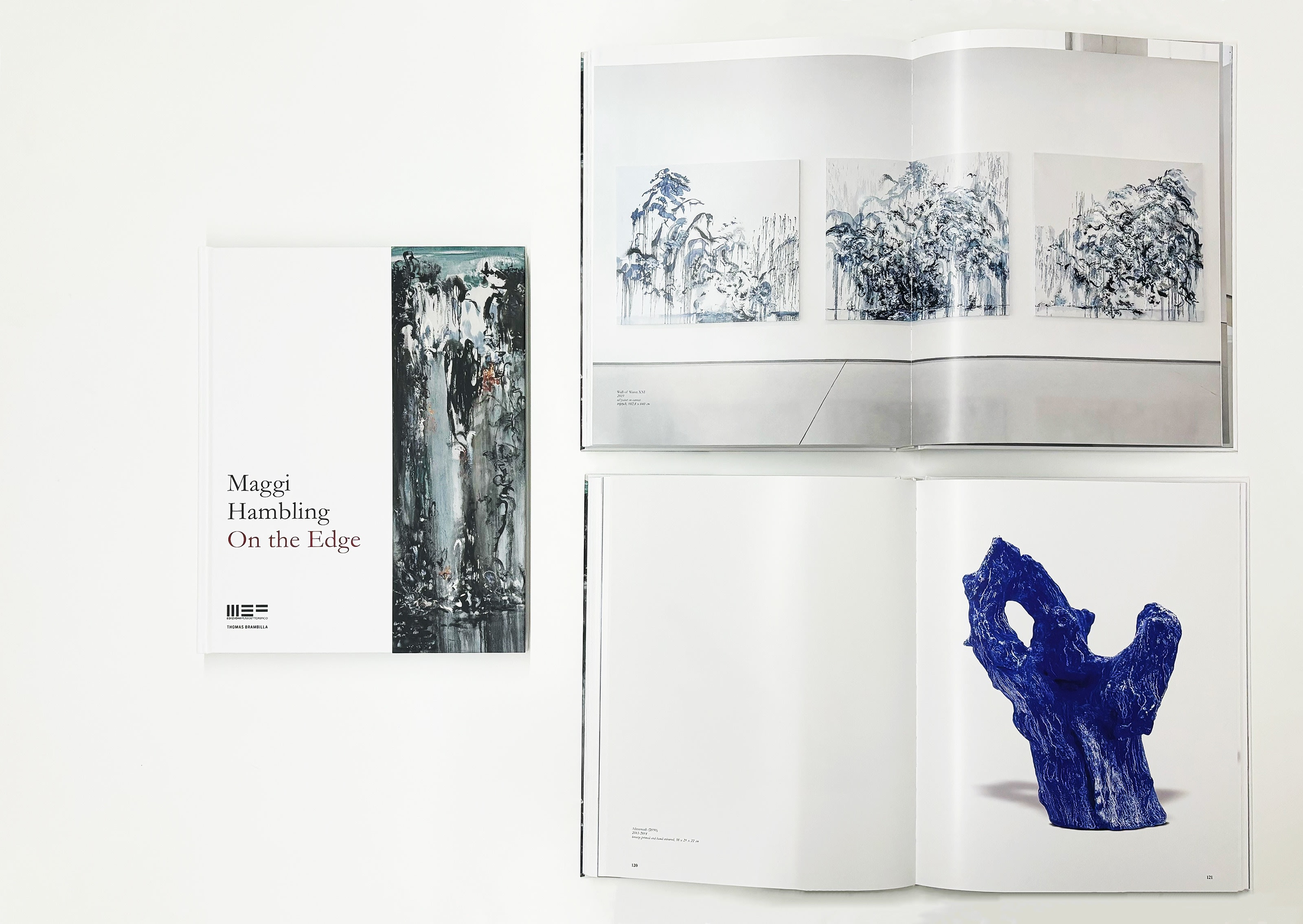Ettore Fico Museum, in collaboration with Thomas Brambilla Gallery is proud to present an exhibition of the acclaimed British contemporary artist Maggi Hambling. On the edge is Hambling’s first museum exhibition in Italy, showcasing an important survey of painting and sculpture that embody Hambling's unique vision on the intricate relationship between humanity and the natural environment that surrounds us.
Maggi Hambling (b. 1945) is one of Europe’s leading contemporary artists, celebrated both for her paintings of people, the sea, melting polar ice-caps, environmental destruction and war zones, and for her public sculpture, including A Sculpture for Mary Wollstonecraft and A conversation with Oscar Wilde in London and the monumental Scallop, for the composer Benjamin Britten, on Aldeburgh Beach, Suffolk. She is widely recognized for work that traverses the boundaries of conventional artistic expression and which invites a meditation on the universal relationships between self and environment, people and place.
On the edge includes an important trio of Waterfall paintings that were the made before the artist embarked on her large-scale paintings from the continuing series of Wall of Water paintings, first exhibited at the National Gallery in London, and more recently in museum retrospective exhibitions in China. Depicting explosions of waves crashing into a concrete sea wall the Walls of water convey the power of the natural world confronting mankind. Created in the wake of the death of a close friend, they convey the dual sense of disintegration and what it means to be alive, resonating with the works of painters as diverse as Twombly and Bacon.
As a counter-balance to the Wall of water series, the Edge paintings address mankind’s destruction of the natural world - melting polar icecaps and a recent series of tall canvases reminiscent of Chinese ink scrolls, depicting mountains and polar wastes through bold accumulations of indigo and white which suggest an internal–psychological–wilderness as much as a physical setting.
Hambling’s sculpture practice is represented by the Aftermath series. These painted bronze totemic works began as found pieces of dead wood. Out of gnarled natural forms, Hambling has coaxed the presence of imaginary beings. Alternately animal and human, familiar and other worldly, the sculptures emanate a variety of moods and art historical resonance from Surrealism to medieval polychromy. The strange creatures of Aftermath conflate the forms of the ancient past - grave portraits, gargoyles and relics - with the spirit of life to create vital contemporary works of sculpture.
The exhibition will also include Self-Portraits and Portraits of important figures from Hambling’s past, including her mentor, the artist Arthur Lett-Haines, and her lover and muse Henrietta Moraes. The portraits condense their subjects with rapid, gestural marks clinging to a white ground. Within these turbulent formations of paint, looser, more abstracted images emanate an emotional sincerity that springs from the artist’s continuing engagement with life in the here and now. These portraits transmit double moods of humor and doubt, anger and joy, aliveness and mortality.
The exhibition is accompanied by a catalog that includes critical essays by Andrea Busto, John Berger,, James Cahill and Emanuela Zanon.


